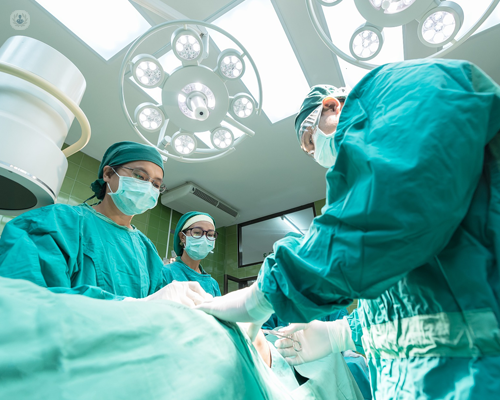Innovations in gallbladder surgery
Escrito por:Gallbladder surgery, primarily performed to remove the gallbladder due to gallstones or other complications, has evolved significantly with advancements in surgical techniques. These innovations have improved patient outcomes, reduced recovery times and minimised risks associated with traditional procedures. Here, we explore some of the most impactful innovations in gallbladder surgery.

What is gallbladder surgery?
Gallbladder surgery, known as cholecystectomy, is the surgical removal of the gallbladder, a small organ that stores bile produced by the liver. This surgery is commonly recommended for patients experiencing pain or complications due to gallstones, inflammation, or other gallbladder disorders.
Laparoscopic cholecystectomy: The minimally invasive gold standard
Laparoscopic cholecystectomy has become the standard technique for gallbladder removal, replacing traditional open surgery in most cases. This method involves making small incisions through which a laparoscope (a small camera) and specialised surgical tools are inserted. Key benefits include:
- Smaller incisions: Minimally invasive surgery results in reduced scarring and less pain.
- Shorter recovery time: Patients typically return home within a day or two and recover more quickly than with open surgery.
- Lower risk of complications: Reduced tissue trauma leads to fewer post-operative complications.
Innovations enhancing laparoscopic surgery
1. Robotic-assisted surgery
Robotic-assisted systems like the da Vinci Surgical System have enhanced the precision of laparoscopic cholecystectomy. Surgeons control robotic arms equipped with surgical tools, allowing for more controlled and precise movements. Benefits include:
- Improved accuracy: Enhanced dexterity and visualisation improve surgical outcomes.
- Reduced surgeon fatigue: The ergonomic design reduces physical strain on the surgeon, allowing for better focus during lengthy procedures.
2. Single-incision laparoscopic surgery (SILS)
SILS is an advancement in minimally invasive surgery where only one small incision is made, often at the navel. This technique offers:
- Minimal scarring: The single incision results in an almost invisible scar.
- Faster recovery: Recovery time is similar or quicker than standard laparoscopic procedures.
Enhanced imaging and safety
Fluorescence imaging technology
New imaging techniques such as fluorescence cholangiography help improve visualisation of the bile ducts during surgery. This innovation enhances safety by:
- Reducing bile duct injuries: Improved accuracy in identifying anatomical structures lowers the risk of accidental damage.
- Better outcomes: This leads to fewer complications and a smoother recovery process for patients.
3D visualisation and augmented reality (AR)
Advanced imaging systems provide 3D visualisation or integrate augmented reality, giving surgeons a detailed view of the surgical area. This helps in planning and executing complex procedures with greater confidence and precision.
Future trends in gallbladder surgery
Emerging trends point towards further miniaturisation of surgical instruments and greater use of artificial intelligence (AI) to assist in surgical decision-making. AI-driven tools can help identify anatomical structures, anticipate complications, and guide surgeons through each step of the operation.
Innovations in gallbladder surgery have transformed patient care, making procedures safer, less invasive, and more effective. With ongoing technological advancements, the future of gallbladder surgery promises even greater precision, reduced recovery times, and improved overall patient experiences.


